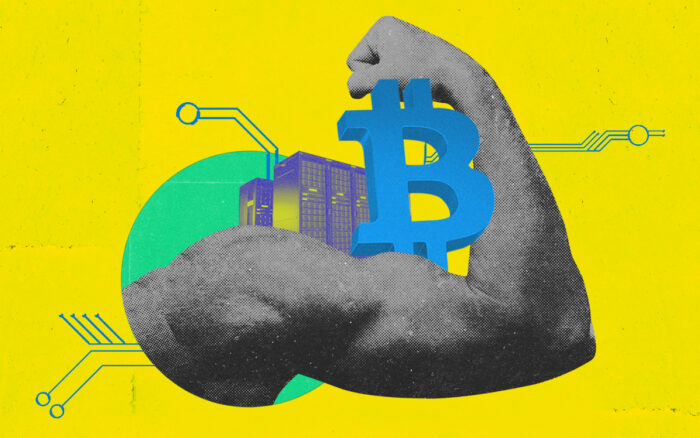
The world of cryptocurrency can seem like a labyrinth at first glance. But once you break it down, the underlying technologies and potential use cases make a lot of sense. The world of digital tokens is becoming increasingly visible as blockchain continues to emerge as a leading catalyst for digital transformation in businesses and other organizations.
Many have heard of Bitcoin or other cryptocurrencies, but few understand how they work or their implications for the future. In this article, we’ll explain everything you need to know about cryptocurrency and the blockchain technology that makes it possible.
What is Cryptocurrency?
We’ll start with the basics. Cryptocurrency is a digital or virtual currency that uses encryption techniques to regulate the generation of units of currency and verify the transfer of funds. This article from Boostylabs website states that there are different types of cryptocurrencies, all of which are based on blockchain technology. As cryptocurrencies are becoming increasingly mainstream, it’s important to understand how they work. Let’s take a look at the different types of cryptocurrencies, the technology that makes them possible (including blockchain), and how businesses are using cryptocurrencies.
How Does Blockchain Work?

At the core of every cryptocurrency is blockchain technology. As more people use cryptocurrencies, the attention surrounding blockchain is increasing. But what exactly is blockchain? Blockchain is a digital distributed ledger (a system used to record transactions and track assets) that operates on a principle of consensus. Here’s how it works. When someone initiates a transaction, that information is sent out to all computers on the blockchain network.
Then, the computers check their own internal ledgers to make sure that the person initiating the transaction has the amount of money required. Once the computers confirm that the transaction is legitimate, the money is transferred. Then, each computer updates its ledger with the new transaction. This is why blockchain technology is referred to as a “distributed ledger” system.
Blockchain Use Cases in the Real World
There are many potential use cases for blockchain technology, and many of them are happening in the real world.
Here are a few examples:
– Bitcoin and other cryptocurrencies: As we mentioned above, cryptocurrencies are one application of blockchain technology.
– Supply chain management: Blockchain can be used to track products and their origins along the supply chain. This can give businesses more visibility into the lifecycle of their products and increase trust among consumers who want to know more about the products they purchase.
– Smart contracts: With blockchain, you can create “smart contracts” that execute when specific conditions are met.
This can help businesses automate processes and save time and money by eliminating the need for third-party verification.
– Voting: Blockchain technology can also be used to create verifiable voting systems. – Crowdfunding: Companies can create blockchain-based tokens that act like shares of stock or equity. This allows businesses to raise money from a larger pool of investors while reducing the amount of regulation they need to comply with.
– Data storage: Companies can use blockchain to store data like customer records or other sensitive information in a more secure and transparent way.
Pros and Cons of Blockchain Technology

Now that we’ve broken down the basics of blockchain and its potential use cases, let’s take a look at some of the pros and cons of this technology.
Pros:
– Increased trust and transparency: Since data is distributed across a network of computers and is verified by consensus, a blockchain system would increase transparency in supply chain operations, voting processes, and more.
– Reduced fraud: Since blockchain systems are based on verification and authentication, they can provide more fraud protection.
– More efficient: With blockchain systems, businesses can make more efficient use of resources and save time and money.
– Better cash flow: Blockchain systems can also help businesses forecast cash flow more accurately.
– New opportunities: The emergence of blockchain technology has created new opportunities for businesses and other organizations.
Cons:
– Expanding regulation: As blockchain technology becomes more popular, it is also becoming more heavily regulated.
– Higher costs: Because blockchain systems require more computing power, they can come with higher costs.
– Initial investment: Blockchain systems require initial investments in hardware and software. – Trust: Some people worry that blockchain systems are too opaque because they’re based on trust rather than verification.
– Scalability: Some blockchain systems aren’t scalable enough to meet the needs of larger companies.
Final words: Will the real blockchain please stand up?

We’ve come a long way since Satoshi Nakamoto first introduced Bitcoin. As the cryptocurrency landscape has expanded and evolved over the last decade, the definition of blockchain has become increasingly murky. Thankfully, marketers and other industry professionals are working to bring clarity back to the conversation.
In fact, some experts have even coined new terms to distinguish blockchain from other technologies. We’ve covered some of these terms below. Depending on your needs and the needs of your business, it may be helpful to understand these distinctions. Any questions? Please, read our summary!
Summary
Blockchain is the technology that has disrupted the financial world in the last few years. It is also known as distributed ledger or decentralized ledger. Blockchain has been considered as a revolution in the financial world and it has even been called “the biggest thing since the Internet”. Blockchain development is a very complex process. It requires a lot of expertise and knowledge to be successful in this field. The blockchain development process includes both software development and cryptography, which are two separate fields with different requirements and skillsets.
Blockchain technology is a revolutionary new technology that has the potential to change the way we live and work. However, not all blockchain projects are created equally. With the blockchain, we can now see a new way of doing things. It is so much more than just a digital currency. It is an innovative technology that has the potential to transform the world in many ways. Final words: Blockchain development is still in its infancy and it will take some time for it to mature into something that we can use in our daily lives.
















